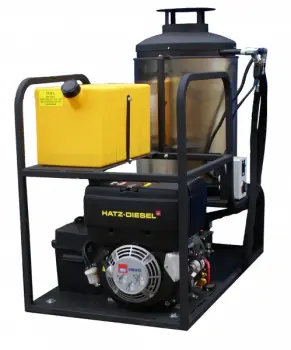Pressure Washer Maintenance
When it comes to pressure washers, routine maintenance is vital to keeping your machine running at maximum capacity. Cleaning and monitoring your machine will help you be more in tune with your equipment, allowing you to detect and address issues early, and reduce personal maintenance costs while maintaining operations.
Regular maintenance of your pressure washer will ensure you get the most efficient, long-lasting use from your machine at the lowest personal cost.
The Importance of Proper Industrial Pressure Washer Maintenance
Taking care of your pressure washer will help keep it running for many applications. Regular maintenance will increase the dependability and safety of your machine. Additionally, with constant examination, you can catch problems or failures early and prevent them from escalating into severe issues. Taking the time to perform routine maintenance can save you money while helping your pressure washer perform at its highest capacity.
Conversely, improper or irresponsible care of your machine will lead to swift deterioration, frustrating applications, costly repairs, or even total replacements. Proper care of your pressure washer will help avoid the high fees associated with machine failure. Consistent maintenance will help keep your machine running to the best of its capabilities.
Step-By-Step Guide for Routine Pressure Washer Maintenance
Whether you operate a cold or hot water pressure washer, this maintenance guide will help ensure your machine functions at maximum capacity for as long as possible.
Before Use
- Inspect all oil levels in the pump and engine. If your machine has a water tank, ensure there is adequate water in the tank unit.
- Check that the nozzle is tightly secured and no debris is plugging the nozzle or blocking the hose.
- If your pressure washer has an inline water filter, check that it is clean. If not, rinse prior to operating the machine.
After Use
- Clean any chemical or detergent intake to remove residue buildup.
- Wash away dirt and grime.
- Drain excess water to reduce the risk of bacterial growth or mold.
- Store safely away from harsh environments and the elements.
Following these steps, along with additional tips from your particular manufacturer, will help extend your pressure washer’s lifespan and increase productivity over time. Check your owner’s manual for machine-specific maintenance information.
Troubleshooting Your Industrial Pressure Washer
With preventative maintenance, most pressure washer issues are avoidable or quickly resolved. Below are some of the most common issues associated with pressure washers and how to resolve them. However, referring directly to the owner’s manual of your specific machine is essential for additional, individual information.
Leaking Water
Leaking water from either the pump or the wand can be the result of several issues. Compressed air inside the washer, loose attachments, cracked O-rings, and defective or debris-ridden valves can all lead to issues. Ensure your parts and attachments are firmly secured, as loose fittings are the most common source of leaking. If the problem persists, examine the valves further. Replace any leaking O-rings or seals using your owner’s manual for guidance.
Low Pressure
The most common culprit of little to no water pressure is clogged passageways. Low pressure is typically a simple fix. Check various individual parts of your pressure washer, including the wand, hose, and inlet filter. Flush out all debris, which will reopen any clogged portions of the washer and increase the pressure.
Unusual Noise & No Flow
A common reason for strange sounds and a lack of flow from your machine could be improper maintenance or storage. Make sure to change the oil in your machine frequently, with intervals of up to 250 hours twice per year if usage is under 250 hours. If the oil appears milky, water seals have been leaking, or water has entered the crankcase, change the oil immediately. If, after replacement, the oil becomes milky once again, the oil and water seals need to be replaced to avoid catastrophic damage to the pump. When storing your pressure washer, be sure to protect it from the elements and keep it safe when not in use. Check your owner’s manual for specific instructions.
Pulsation
Pulsation in the liquid flow is typically caused by debris or blockage of the passageway. Clean the nozzle and flush the wand and hose to remove buildup and resume operations.
Contact Cam Spray for Helpful Tips or Pressure Washer Guides
Cam Spray is a leader in the field of pressure washers. With over 50 years of experience, our knowledge and expertise are unmatched. Whether you’re looking for replacement parts, manuals, or more information regarding maintenance and troubleshooting, our team is prepared to assist you with all questions.
Contact us today, and let us provide you with the best pressure washer service available.

Tailored cleaning solutions for your toughest challenges - Cam Spray builds it your way!
 Learn About Our Custom Capabilities
Learn About Our Custom Capabilities





